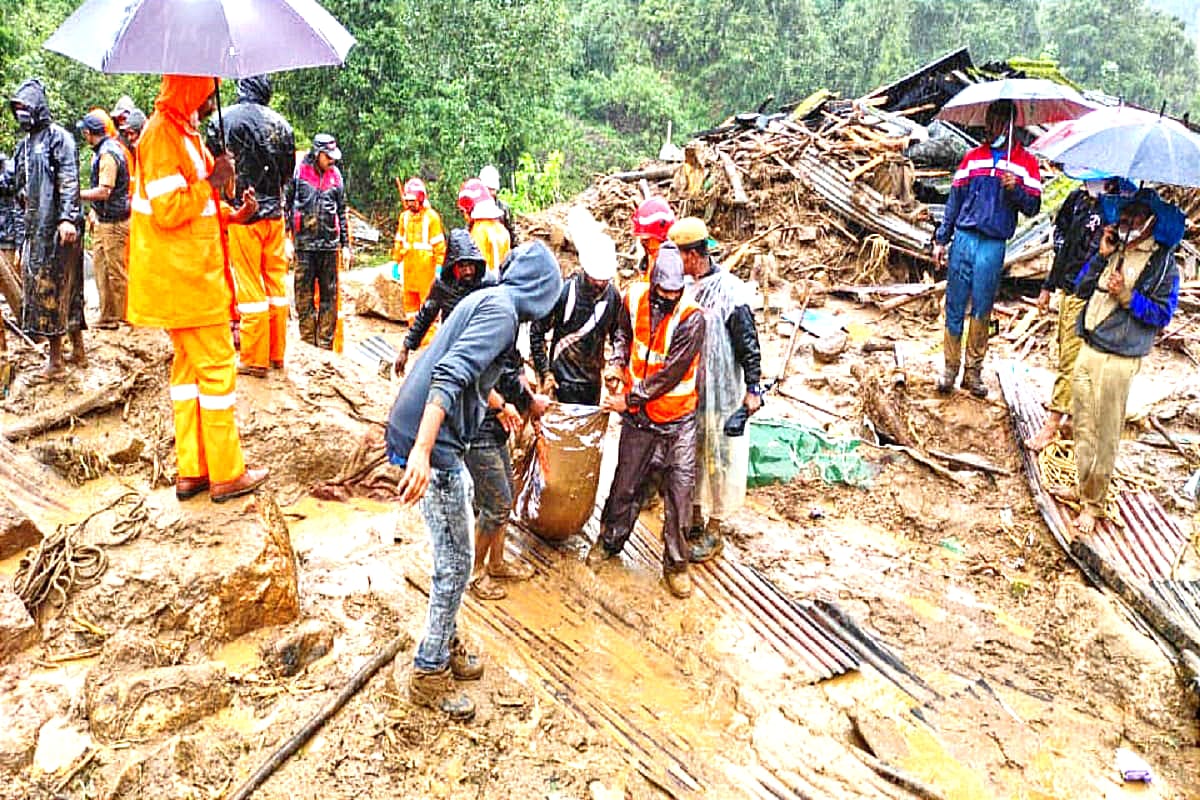Wayanad Landslide Tragedy: A Detailed Report
A terrible avalanche struck the quiet area of Wayanad in Kerala, causing huge loss of life and property. Here is a detailed account of the incident, its causes, and the aftermath:
The Incident
On the morning of July 30, 2024, heavy rains triggered a major landslide in the Meppadi area of Wayanad. The landslide occurred around 3:00 am, sweeping away several houses and trapping many residents under the debris.
Casualties and Injuries
- At least 143 people died in the landslide. This number is expected to rise as rescue efforts continue.
- Many people have been injured, many of them critically. Hospitals in the area are struggling to handle the influx of patients.
Rescue Operations

- Agencies involved: The National Disaster Response Force (NDRF), Army and Navy are leading the rescue efforts. The local police and fire departments are also actively involved.
- Challenges: Adverse weather conditions, including incessant rain and unstable terrain, have hampered rescue efforts. Despite these obstacles, rescue teams are working frantically to reach people trapped under the debris.
- Community support: The local community and volunteers have come together to assist in the rescue operations. They are providing food, shelter and medical aid to the affected families.
Causes of the Landslide
- Monsoon rains: The region received a lot of rain during the monsoon season. The India Meteorological Department (IMD) warned about heavy rains, which contributed significantly to the landslides.
Climate change: Experts believe that increased heat in the Arabian Sea has intensified monsoon rains, resulting in more frequent and severe weather events.
- Geological factors.
Terrain: Wayanad is located in the Western Ghats, a mountain range known for its steep slopes and loose soil structure, making it prone to landslides.
Soil saturation: Constant rains saturated the soil, weakening its stability and making it more vulnerable to landslides.
Impact on the Region
- Property damage: The avalanche has caused considerable damage to homes, roads and gardens. Many houses have been completely destroyed, and roads are filled with debris and fallen trees.
- Environmental impact: The landslide has had a significant impact on the local ecosystem, with uprooted trees and overflowing water bodies becoming an additional concern.
Government Response
- The Kerala government has announced a two-day state mourning in memory of the victims. Chief Minister Pinarayi Vijayan visited the affected areas and promised all possible assistance to the relatives of the victims.
- Central government: Prime Minister Narendra Modi has announced an ex-gratia of Rs 2 lakh for the relatives of the deceased and Rs 50,000 for the injured. The central government has also promised more funds for restoration and reconstruction projects.
Community Support
Local aid: Local communities have demonstrated incredible resilience and solidarity. Volunteers are actively involved in rescue operations and distributing essential supplies to affected families.
NGOs and organisations: Many non-governmental organisations and philanthropic groups have offered aid. They provide food, clothing and medical care to individuals in need.
Conclusion
The Wayanad landslide is a tragic reminder of the vulnerability of certain regions to natural disasters. While the immediate focus is on rescue and relief operations, there is a pressing need for long-term measures to prevent such incidents in the future. Improved disaster preparedness, early warning systems, and sustainable land management practices are essential to mitigate the impact of such calamities.
Our thoughts and prayers are with the families affected by this disaster. The resilience and solidarity shown by the community and the tireless efforts of the rescue teams are commendable.









Post Comment